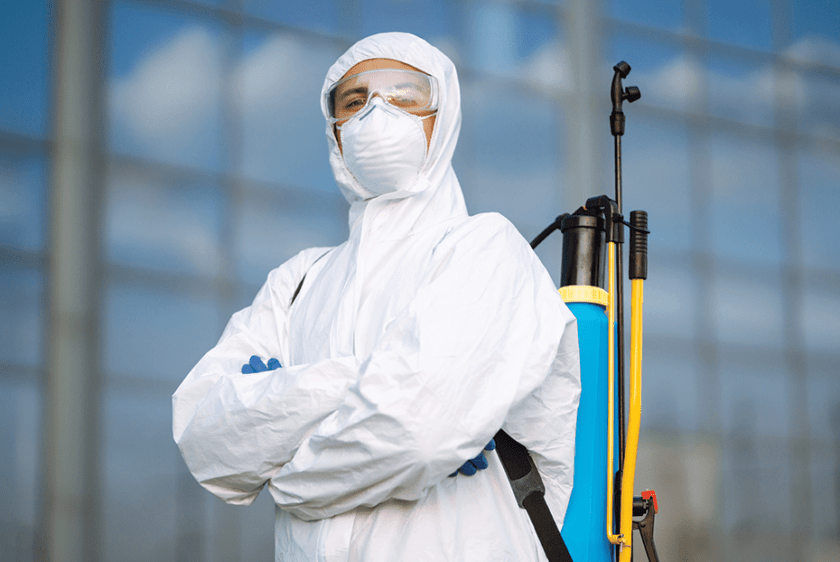Go with expert Pest Control to maintain a pest-free home.
Eco-Friendly Pest Control Approaches for Taking Care Of Wild Animals in Urban Areas
Urban areas often find themselves at the junction of human activity and wild animals, resulting in one-of-a-kind difficulties in pest management. Environmentally friendly methods emphasize lasting coexistence, employing methods such as habitat adjustment and all-natural repellents to alleviate human-wildlife conflicts. These approaches not only secure the setting however also improve neighborhood interaction in wild animals management. As urban populaces remain to expand, comprehending the dynamics of wildlife interactions becomes progressively essential. What innovative techniques can be executed to make sure both environmental balance and metropolitan safety? Exploring this inquiry reveals a compelling landscape of prospective services.
Understanding Urban Wild Animals Dynamics
Recognizing Urban Wildlife Dynamics is important for creating efficient and green parasite control strategies. Urban areas are progressively ending up being habitats for various wildlife varieties, driven by factors such as habitat fragmentation, food schedule, and human infringement. Acknowledging these characteristics permits a nuanced approach to pest administration that aligns with ecological concepts.
Urban wild animals often includes species such as raccoons, squirrels, and birds, which adapt to city environments, finding niches in green areas, parks, and even houses. Their presence can cause conflicts with humans, specifically when they manipulate human resources for food and shelter. Recognizing the habits and ecological functions of these varieties notifies techniques that lessen negative interactions while promoting biodiversity.
Additionally, acknowledging the interdependencies within city communities helps in identifying crucial areas for environment conservation and remediation. This knowledge contributes to the growth of incorporated insect administration (IPM) techniques that consider the environmental equilibrium, thus minimizing dependence on unsafe chemicals. By promoting conjunction between people and city wild animals, cities can produce healthier environments that profit both locals and local ecosystems, paving the way for lasting metropolitan living.
Natural Repellents and Deterrents
Natural repellents and deterrents provide a sustainable option to standard insect control approaches by harnessing the power of nature to maintain undesirable types at bay. These eco-friendly solutions usually utilize plant-based ingredients, vital oils, and other naturally happening compounds that deter pests without hurting the atmosphere.
One reliable all-natural repellent is peppermint oil, which is understood to repel rats and pests. Its solid fragrance is undesirable to many insects, making it a preferred option for city setups. Likewise, vinegar and citrus peels can work as deterrents, as their strong smells are typically unattractive to various wildlife.
Furthermore, diatomaceous planet is a natural powder that can be spread out in areas vulnerable to bug activity, efficiently dehydrating and deterring bugs without positioning threats to non-target types. Garlic sprays and neem oil are recognized for their capability to repel a large range of insects, including both pests and larger wild animals.
Implementing these natural repellents not just reduces dependence on chemical pesticides but additionally promotes a much healthier city community, cultivating an extra balanced conjunction in between human beings and wild animals. By making use of these strategies, city locations can efficiently take care of pest populaces while lessening ecological impact.
Habitat Adjustment Strategies
Efficient environment modification techniques play a critical role in sustainable insect monitoring by altering the environment to make it less favorable to pest invasions. By recognizing the eco-friendly dynamics of urban areas, homeowner can carry out calculated alterations that hinder pests while promoting biodiversity.
(Tentless Termite Treatment)One key technique involves preserving proper cleanliness. This consists of routine waste elimination, safeguarding trash can, and removing standing water to minimize breeding sites for bugs and rats. In addition, landscaping practices such as selecting indigenous plants can improve ecological equilibrium, supplying habitats for useful organisms while decreasing sources for parasites.
Another vital approach is to seal access factors in structures. Checking and repairing fractures in structures, walls, and home windows can significantly lower insect access. Creating physical barriers, such as fencings or plant buffers, can hinder wildlife movement right into human-inhabited areas.
Integrated Insect Management Practices
Building upon habitat modification strategies, integrated parasite administration (IPM) methods supply a holistic strategy to managing parasite populations while lessening ecological effect. IPM incorporates numerous approaches, including biological, social, mechanical, and chemical controls, to attain effective bug administration.
Organic control involves the intro of natural killers or bloodsuckers to minimize pest populaces. Social practices, such as plant turning and cleanliness, interfere with pest life process and reduce their environments - Pest control service. Mechanical controls, like catches and obstacles, give prompt relief visit this web-site from insect stress without chemical treatment
Chemical controls are used as a last hope, focusing on targeted applications that restrict harm to non-target varieties and the setting. The selection of environmentally pleasant pesticides, when necessary, is indispensable to the IPM structure. Additionally, keeping track of pest populations and assessing possible damages aids educate decision-making, guaranteeing that interventions are timely and effective.
Neighborhood Involvement and Education

(Ant control Port Charlotte)Workshops and informational sessions can outfit citizens with understanding regarding indigenous varieties, environment preservation, and efficient non-toxic insect administration methods. Collaboration with colleges, neighborhood organizations, and government agencies better enhances academic outreach, ensuring that important info gets to diverse target markets.
Additionally, community-led campaigns, such as community clean-up days and environment reconstruction projects, not just promote biodiversity however also reinforce neighborhood connections. Pest control service. By encouraging homeowners to share their experiences and observations, areas can create targeted approaches that deal with specific neighborhood parasite issues
Incorporating feedback from locals right into bug administration plans makes it possible for a more receptive and adaptive strategy to wildlife challenges. Inevitably, notified and involved communities are vital to achieving lasting success in environment-friendly insect control, leading to healthier city atmospheres that value both human and ecological demands.

Verdict
In verdict, green bug control approaches deal lasting services for managing city wildlife. By prioritizing environment adjustment, utilizing all-natural repellents, and executing incorporated insect administration techniques, communities can cultivate a harmonious conjunction with neighborhood fauna.